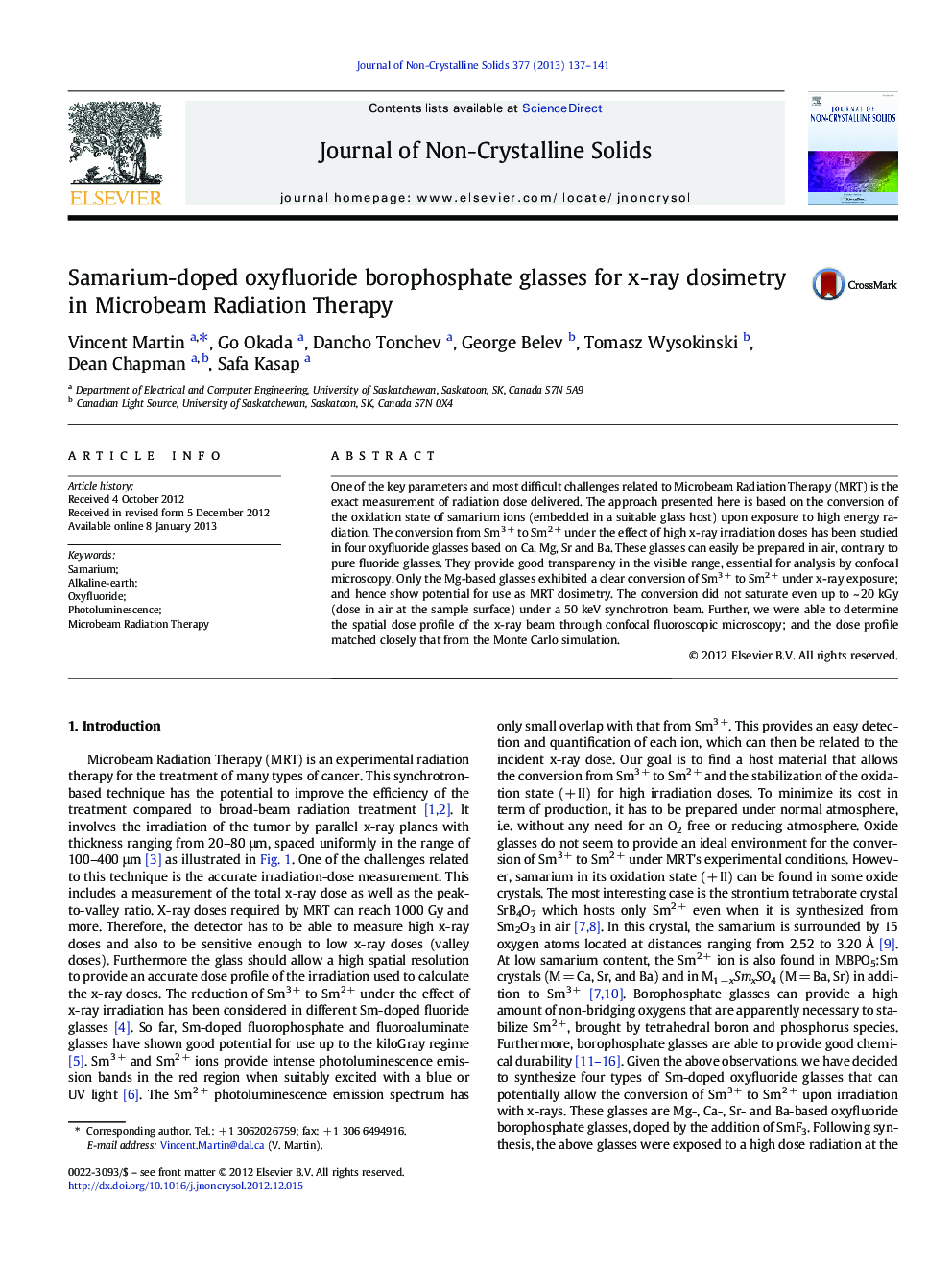| Article ID | Journal | Published Year | Pages | File Type |
|---|---|---|---|---|
| 1481232 | Journal of Non-Crystalline Solids | 2013 | 5 Pages |
One of the key parameters and most difficult challenges related to Microbeam Radiation Therapy (MRT) is the exact measurement of radiation dose delivered. The approach presented here is based on the conversion of the oxidation state of samarium ions (embedded in a suitable glass host) upon exposure to high energy radiation. The conversion from Sm3 + to Sm2 + under the effect of high x-ray irradiation doses has been studied in four oxyfluoride glasses based on Ca, Mg, Sr and Ba. These glasses can easily be prepared in air, contrary to pure fluoride glasses. They provide good transparency in the visible range, essential for analysis by confocal microscopy. Only the Mg-based glasses exhibited a clear conversion of Sm3 + to Sm2 + under x-ray exposure; and hence show potential for use as MRT dosimetry. The conversion did not saturate even up to ~ 20 kGy (dose in air at the sample surface) under a 50 keV synchrotron beam. Further, we were able to determine the spatial dose profile of the x-ray beam through confocal fluoroscopic microscopy; and the dose profile matched closely that from the Monte Carlo simulation.
► Sm-doped magnesium borophosphate oxyfluoride glass allows the reduction of Sm3 +. ► Mg-based glass can measure high x-ray doses (> 20 kGy). ► Mg-based glass offers high resolution capabilities. ► Mg-based glass can be used in Microbeam Radiation Therapy.
